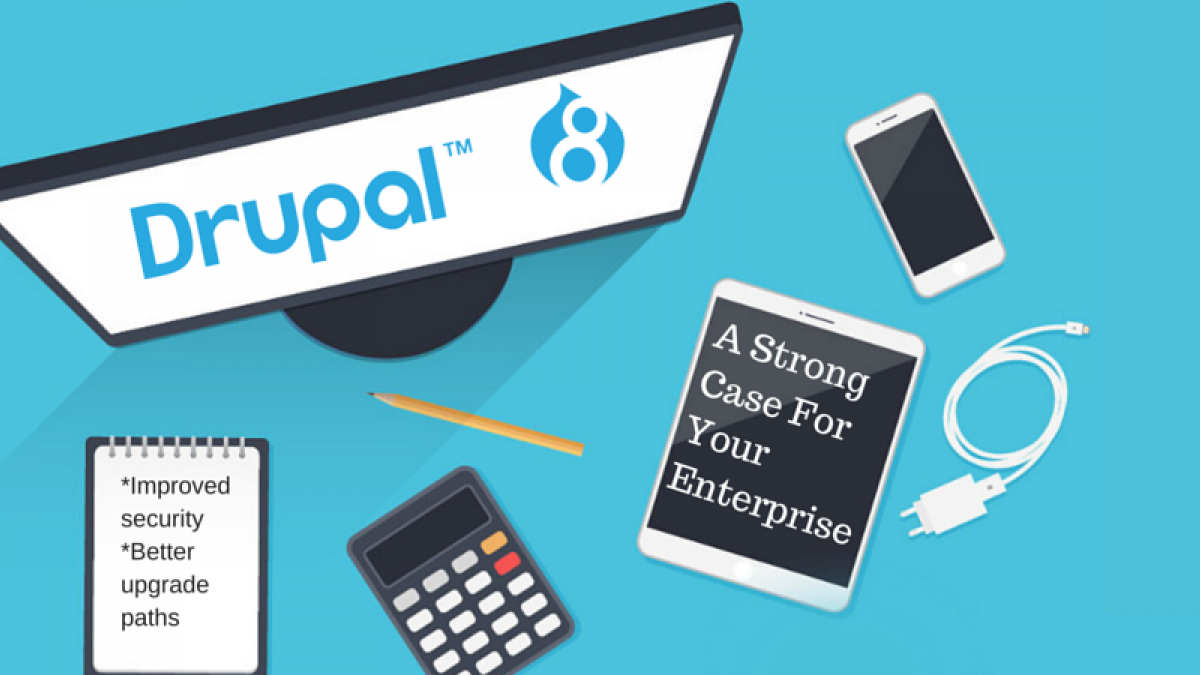
Drupal 8 Makes A Strong Case For Your Enterprise
Deciding on an open source, flexible, enterprise-ready solution for your marketing efforts, is a daunting task. Should you build custom solutions leveraging a framework, or adopt a pre-built CMS? What are the costs involved? Can you live with limitations or being boxed in? How well can it be supported?
What if there was a world-class CMS that fully embraced an enterprise framework so that you could have the best of both worlds? What if that solution not only covered your website marketing needs, but could also be a full blown API for your mobile, POS systems, CRM and other marketing channels? What if that solution was open source so that you were no longer handcuffed to someone else's development roadmap and were not forced to pay $100k+ licensing fees just to use the software?
As a marketer, you could free up licensing fees for more important initiatives. You could leverage pre-built CMS solutions while maintaining the flexibility to build completely custom solutions. You could leverage data across different channels and/or combine channel data to build a truly remarkable hub for all of your marketing efforts.
Symfony 2 adds class(es) to your enterprise
Symfony, Drupal’s newly adopted object-oriented framework, provides strict compliance and more structure to the underlying application, making it more easily accessible, maintainable and scalable. Developers that understand object-oriented programming (OOP) patterns, or that have worked with Symfony in the past, can begin contributing more easily without having to learn a non-standard, "hacky" CMS-centric way of developing a website.
While Drupal 7 is widely known as a resource "hog", Symfony was designed to load only the resources it needs upon each page load. This should decrease the amount of resources needed to run a Drupal 8 site. Other benefits include:
- Improved security
- Better upgrade paths
- Built in version control
- Improved language support
- Mobile-first design
"This "success" is due to many factors but probably because we were one of the first frameworks to recognize and embrace the changes of the web and PHP: PHP 5.3 vs PHP 5.2, Git vs SVN, components vs a monolithic framework, Twig vs PHP, dependency injection, ... Symfony2 is a revolution, not just a big evolution of the platform."
-Fabien
Twig
Drupal 8 will also adopt Twig as its template engine, which provides several advantages over its predecessor, PHPtemplate. Front-end developers now have a easier theme system, more freedom to innovate and reduced overhead; all of which translate to a better user experience for your consumers, more flexibility for your designers, and more profits for your department. Simply put, you can do a lot more with a lot less.
REST Easy With This API
You'll gain the most benefit from Drupal 8’s uncoupling of its data and presentation layers – leveraging a fully, built-in RESTful interface. This powerful change allows developers to more easily implement Angular.js, Ember.js or other client-side MVCs to share/display content and data across different marketing channels.
Marketing campaigns are no longer limited to your website or social media pages. Marketing data can be consumed by and shared easily with CRM, Marketing Automation Systems, POS systems, native mobile applications, wearables, desktop applications and more.
Imagine being able to change content on your website, mobile application, POS system or any other connected application, through one, and only one, system - Drupal.
The world is becoming a more connected place at every turn. Drupal proves to be leading the way into a bright future. How can more structure (and more flexibility) help your organization?

